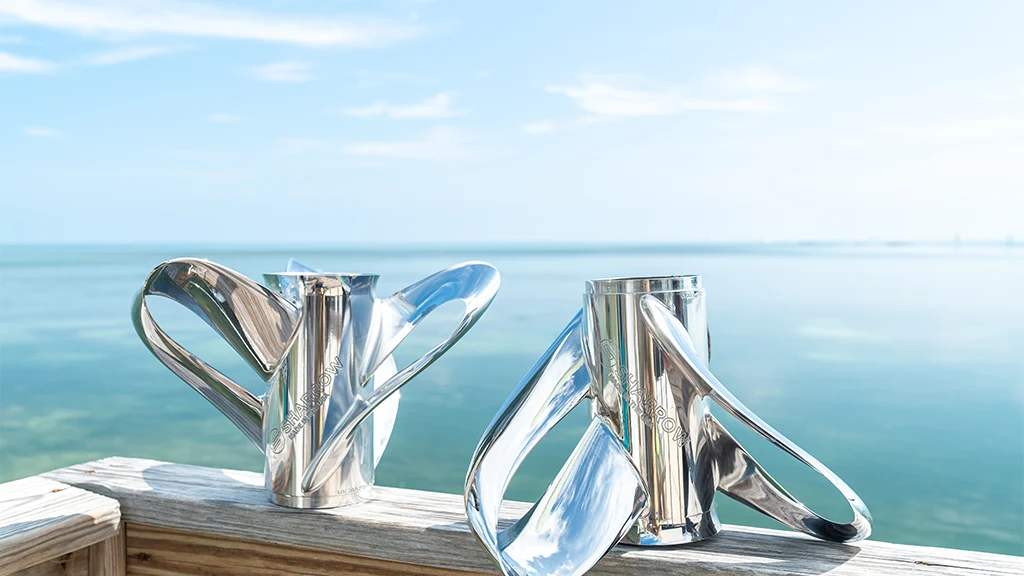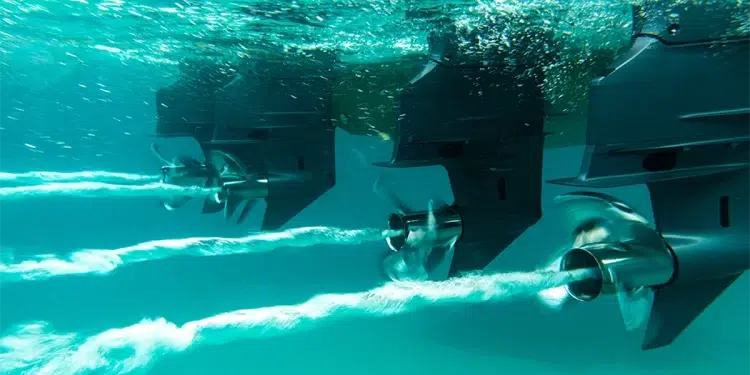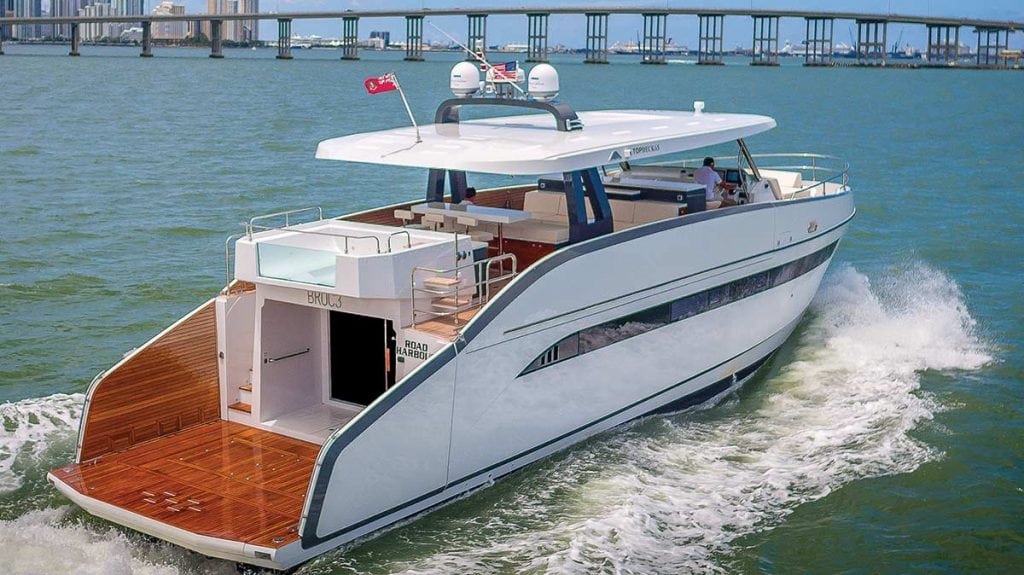Sharrow Marine is proving that its innovative propeller design is the real deal.
A first glance at the Sharrow Marine Propeller makes one think, “What the…heck?” I know I had that thought when looking at the blades that are so different from the conventional airfoil-shaped blade or any of the blade styles used to propel a boat or yacht or ship. The Sharrow propeller looks like an art sculpture, but, besides that, it doesn’t have tips on the ends of the blades. In fact, it looks like you took a blade and bent it back over itself to the shaft, like a bow on a gift box. The twisted and curved, loop-shaped design is proving to be a radical change in propulsion technology.

A Design Unlike Any Other
Invented by Gregory Sharrow in 2012, the Sharrow Propeller is the first major advancement in propeller technology since the 1830s, and its design has solved the most basic problem of rotary propulsion, specifically, the significant reduction of propeller blade tip cavitation and vortices. Sharrow’s patented blade shape design and proprietary manufacturing method results in surprising efficiency, sustainability, and performance gains over traditional designs. It’s also proving to be quieter, smoother, more reliable, and more fuel efficient, which helps reduce a boat’s carbon footprint and its sound impact on marine life.
The proprietary production process yields a propeller that is much stronger and 10 times more dimensionally accurate than the years-old lost wax casting process used by mainstream propeller manufacturers today. It also provides flexibility to make designs for customers optimal for their boat/motor configuration versus the off-the-shelf designs of standard propellers. Each prop is made-to-order after assessing the model, fit, and performance of the customer’s boat and motor combination.
Subscribe Here For More Boating Content
Discovering the Benefits
The inspiration for the Sharrow Propeller originated while Sharrow was working in a production role following an undergraduate program at Boston’s Berklee College of Music. Using drones for live music performances, it was his desire to eliminate unwanted noise that comes from the blades. During the research and development design process, he figured it was faster to do testing in the water because he could manufacture prototype propellers at a much smaller scale due to the increased density of water versus the air. By dramatically reducing or eliminating tip vortices, he was able to considerably diminish the propeller noise. During testing, Sharrow discovered that the propeller had many other advantages that could apply across a range of applications and fluid densities. It not only exceeded efficiency predictions, but provided benefits specifically for marine applications, such as reduced vibration and noise, more reverse thrust, better handling, and a better hole shot.
The advantages were so great for marine applications that he decided to launch a product in the marine market, thus, Sharrow Propellers, and he has been working to increase capacity to meet demand ever since. That said, the design is not limited to water, and there are plans to introduce products soon in other market sectors outside the marine industry.
The Sharrow Propeller design eliminates or reduces tip vortices cavitation which offers significant performance over traditional propellers—a 30 percent extended range, a 30-50 percent faster arrival at equivalent rpm, up to 30 percent more fuel efficiency, faster acceleration, increased performance (tighter turns and improved throttle response), up to 80 percent quieter, less vibration, and up to 50 percent more reverse thrust.
Sharrow Marine Propellers Are Made in America
Sharrow Marine is headquartered near Detroit, Michigan, with a new manufacturing facility just north in Shelby Township where the Sharrow Propellers are made. Sharrow’s roots in the area brought him to settle back in Michigan and to invest in the local economy. With more than 150 patents across 14 countries, Sharrow Marine continues to build new analytical tools, software, optimization codes, parametrically controlled models, and new testing methodologies.
Ultimately, there’s really no better way to understand the propeller’s overall performance than to feel it for yourself. Schedule a free consultation with Sharrow Propeller at sharrowmarine.com.
-by Steve Davis with Sharrow Marine














